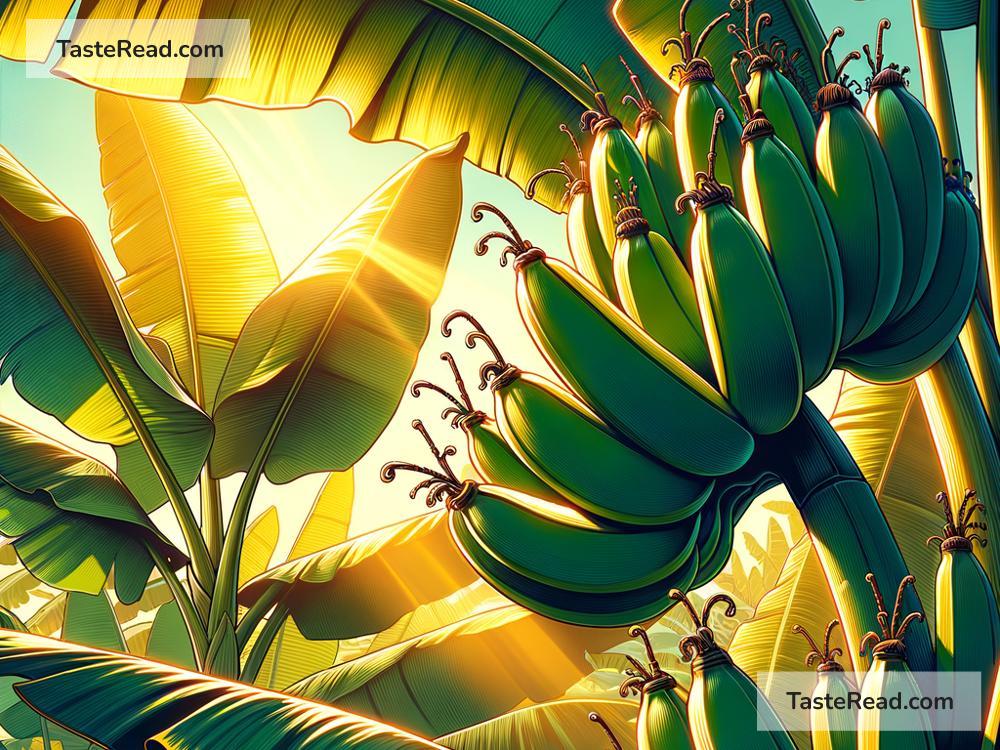Why Bananas Are Curved: A Simple Explanation
Bananas are one of the most popular fruits in the world. They’re sweet, tasty, easy to eat, and packed with nutrients. But have you ever wondered why bananas are curved instead of straight? You’ve probably seen them sitting on your kitchen counter or in the grocery store, and it’s hard not to notice their unique shape. So, let’s dive into the reason behind the curve in bananas—using simple language so everyone can understand!
The Journey of a Banana: How It Grows
To understand why bananas are curved, we first need to look at how they grow.
Bananas grow on large plants that look like trees, but they’re technically not trees. These plants produce clusters of bananas, also called “hands,” which are made up of individual fruits. If you’ve ever seen a banana plant, you might notice that the bananas don’t grow pointing downward—at least, not completely. Instead, they grow upward, toward the sky.
The bananas start out as flowers, protected inside a big purple pod called the “banana blossom.” As the flowers are pollinated and the fruit begins to form, the bananas start growing in straight rows, hanging downward. But here’s where nature begins to work its magic, and things start to bend.
Why Bananas Curve: It’s All About the Sun
The curve in bananas happens because of something called positive phototropism. That’s a fancy term that simply means plants grow toward light. Like most plants, bananas rely on sunlight to grow and thrive. Sunlight helps them produce food through a process called photosynthesis.
As the bananas continue to grow, they try to reach the sunlight. Even though they start pointing downward because of gravity, they bend upward toward the light. This upward curve is what gives bananas their signature shape. You could think of it as the banana’s way of “stretching” toward the sunshine!
A Battle Between Gravity and Sunlight
Every banana faces two forces: gravity and sunlight. Gravity pulls them downward because they’re hanging from the plant. On the other hand, sunlight draws them upward because bananas need light to grow properly. This tug-of-war creates the curved shape we see once they’re fully grown.
If bananas grew in a straight line (pointing downward), they wouldn’t get as much sunlight. That would make it harder for them to develop properly. The upward curve helps bananas stay healthy and flavorful by giving them more exposure to the sun.
The Science Behind the Curve
The curve of a banana isn’t random—it’s actually controlled by special cells in the fruit. These cells are responsible for helping the banana bend upward as it grows. Scientists call the way plants grow toward sunlight tropism. There are different types of tropism depending on whether a plant reacts to light, gravity, water, or other factors.
When it comes to bananas, the combination of positive phototropism (growing toward sunlight) and negative geotropism (growing away from gravity) causes the fruit to curve. Without this unique interaction, bananas might look completely different—and much straighter!
Do All Banana Varieties Have a Curve?
Most bananas are curved, but not all of them have the exact same shape. Some types of bananas are smaller and straighter, while others may have a much more pronounced curve. It can depend on the type of banana and the conditions in which it grows. For example, wild bananas often look very different from the yellow bananas we find in stores.
The bananas we typically eat are called Cavendish bananas. They’re the most common type on the market and are known for their sweet flavor, bright yellow color, and curved shape.
Fun Facts About Bananas
Now that you know why bananas are curved, here are a few more cool facts about this amazing fruit:
-
Bananas are berries! That’s right—technically, bananas are classified as berries.
-
Bananas float in water. If you put a banana in water, it will float because it’s less dense than water.
-
Bananas don’t grow from seeds. Farmers grow banana plants from a part of the plant called a “rhizome.”
-
Bananas are great for your health. They’re rich in potassium, vitamin B6, and fiber.
The Wonder of Nature
The curve of a banana is just one example of how fascinating nature can be. Plants have evolved in countless ways to adapt to their environment, and the banana’s shape is no exception. The interaction between sunlight and gravity not only gives bananas their curve but also helps them grow healthy and strong.
Next time you eat a banana, take a moment to admire its shape—and remember how the fruit you’re holding did its best to reach for the sun! Whether you slice it into your cereal, blend it into a smoothie, or enjoy it as a portable snack, bananas are a delicious reminder of the wonders of nature.
So, now you know why bananas are curved—and it’s all thanks to sunlight, gravity, and a little bit of plant magic!


